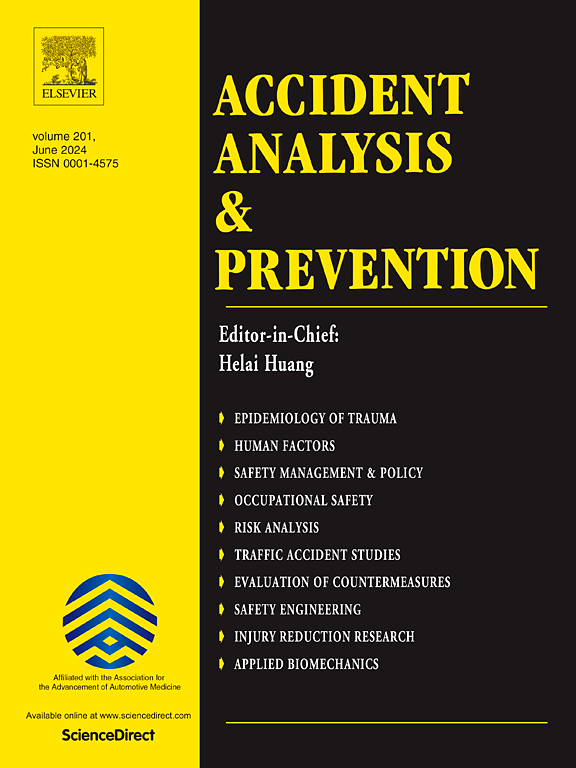The impact of spiral tunnel characteristics on driver HRV and stress perception: A naturalistic driving experiment
IF 5.7
1区 工程技术
Q1 ERGONOMICS
引用次数: 0
Abstract
This study examined the impact of the combined configuration of spiral tunnel length and radius on drivers’ heart rate variability (HRV) and stress perception through a naturalistic driving experiment with 30 participants. Three spiral tunnels varying in both length and radius were evaluated, and the effects of uphill and downhill driving directions were also considered. The results revealed that the combined configuration of tunnel length and radius significantly influenced drivers’ physiological and psychological states. Specifically, longer tunnels with smaller radii were associated with increased average heart rate (HR), decreased standard deviation of normal-to-normal intervals (SDNN), elevated low frequency to high frequency ratio (LF/HF), and reduced sample entropy (SampEn), all indicating heightened stress responses. Uphill driving consistently led to higher average HR, lower SDNN, and higher LF/HF ratio compared to downhill driving, reflecting increased stress due to greater physical and mental demands. These findings offer invaluable insights for the design and management of spiral tunnels, with the ultimate goal of enhancing driver safety and comfort. By optimizing tunnel characteristics and implementing appropriate traffic management strategies, it is possible to create a more favorable driving environment that mitigates the negative impacts on drivers and promotes overall well-being.
螺旋隧道特性对驾驶员HRV和应力感知的影响:一个自然驾驶实验
本研究通过30人的自然驾驶实验,考察了螺旋隧道长度和半径组合配置对驾驶员心率变异性(HRV)和压力感知的影响。对三个不同长度和半径的螺旋隧道进行了评价,并考虑了上坡和下坡行驶方向的影响。结果表明,隧道长度和半径的组合配置显著影响驾驶员的生理和心理状态。具体来说,隧道越长,半径越小,平均心率(HR)增加,正常与正常间隔(SDNN)的标准差降低,低频与高频比(LF/HF)升高,样本熵(SampEn)降低,这些都表明应激反应加剧。与下坡驾驶相比,上坡驾驶始终导致更高的平均HR、更低的SDNN和更高的LF/HF比率,这反映了由于更高的身体和精神需求而增加的压力。这些发现为螺旋隧道的设计和管理提供了宝贵的见解,最终目标是提高驾驶员的安全性和舒适性。通过优化隧道特性和实施适当的交通管理策略,可以创造一个更有利的驾驶环境,减轻对司机的负面影响,促进整体福祉。
本文章由计算机程序翻译,如有差异,请以英文原文为准。
求助全文
约1分钟内获得全文
求助全文
来源期刊

Accident; analysis and prevention
Multiple-
CiteScore
11.90
自引率
16.90%
发文量
264
审稿时长
48 days
期刊介绍:
Accident Analysis & Prevention provides wide coverage of the general areas relating to accidental injury and damage, including the pre-injury and immediate post-injury phases. Published papers deal with medical, legal, economic, educational, behavioral, theoretical or empirical aspects of transportation accidents, as well as with accidents at other sites. Selected topics within the scope of the Journal may include: studies of human, environmental and vehicular factors influencing the occurrence, type and severity of accidents and injury; the design, implementation and evaluation of countermeasures; biomechanics of impact and human tolerance limits to injury; modelling and statistical analysis of accident data; policy, planning and decision-making in safety.
 求助内容:
求助内容: 应助结果提醒方式:
应助结果提醒方式:


